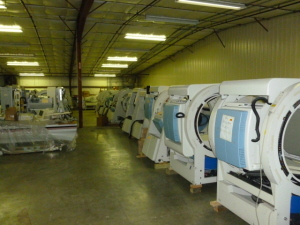por
Nancy Ryerson, Staff Writer | August 20, 2013
From the August 2013 issue of HealthCare Business News magazine
The economic downtown and cutbacks driven by health care reform have led many facilities to hunker down and hold on to equipment longer. That trend has meant brisk business for one sector in particular — parts providers. But more business means more companies want to get in on the money to be made.
“It seems that every time you turn around these days there is a newcomer to the parts market,” says Josh Glas, president of PhiGEM parts. “It is getting increasingly important for the established players to continue to think of innovative ways to differentiate ourselves and rest on our experience and industry maturity.”
At the same time, the slowdown in equipment replacement has also created a decrease in supply for some important parts.



Ad Statistics
Times Displayed: 85005
Times Visited: 5423 MIT labs, experts in Multi-Vendor component level repair of: MRI Coils, RF amplifiers, Gradient Amplifiers Contrast Media Injectors. System repairs, sub-assembly repairs, component level repairs, refurbish/calibrate. info@mitlabsusa.com/+1 (305) 470-8013
“People are keeping their devices longer so there are less devices out there to be parted out, so to speak. So you see a pretty healthy demand for parts, and a dwindling supply,” says Brent Howison, president of The Remi Group.
Lower supply and a more crowded market space means parts providers have to do more than ever to set themselves apart and hold on to loyal customers, whether it’s by getting a more advanced certification, carrying hard-to-find parts or creating a welcoming website or Facebook page. Some companies have also expanded more into international markets —and can help customers with unneeded equipment to do the same.
Parts providers from around the country shared some of their strategies on standing out, and what their innovations mean for potential customers.
Software solutions
One way parts providers impress customers is by being exceptionally organized. When parts providers have upwards of 25,000 parts, they need a way to know what they have without stepping into their cavernous warehouses. Having a reliable and finetuned software system helps companies find parts easily and, by extension, provide fast, efficient customer service.
Technical Prospects warehouse
Many providers create their own software programs to match their specific needs and integrate with accounting software or other programs. At Technical Prospects, the company’s proprietary software allows them to track when parts have been added to inventory and when they’re on their way to the warehouse.
“It gives us a lot more ability to be more up front with the customer, to say ‘hey listen it looks like we might have something coming in, I’m just going to go out in the warehouse and double check we don’t have this part,’” said John Vandersteen, sales representative at Technical Prospects. “Maybe we’re showing no stock, but we had two systems at the door that day.”

